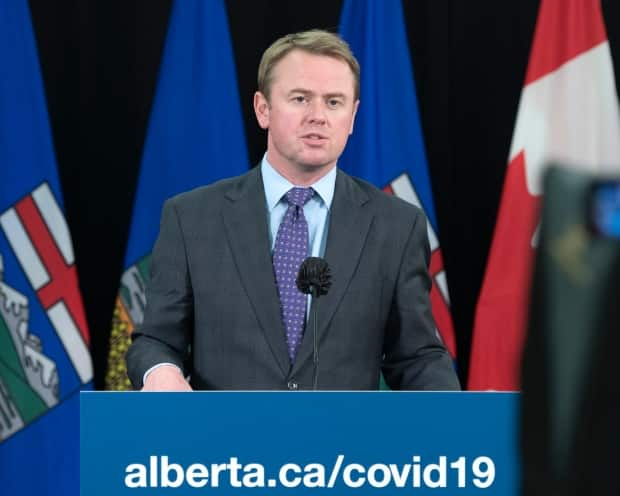Alberta reaches tentative deal with doctors after a year of acrimony

Health Minister Tyler Shandro and Alberta Medical Association president Paul Boucher have announced a tentative deal between the provincial government and Alberta physicians.
The Alberta government has been locked in a bitter dispute with physicians for more than a year.
"I look forward to working with Dr. Boucher and the AMA to support this agreement's successful ratification," Shandro said at a news conference.
"Agreement details will not be released publicly at this time. The AMA will now take the first step towards ratification."
Last February, Shandro imposed a new compensation framework after unilaterally ending the province's master agreement with the AMA.
Shandro said the past year has been difficult as the government attempted to manage fiscal stability, patient care and equity for physicians.
A partnership with AMA means that the fiscal goals can be met, in a way that achieves that balance, Shandro said.
"Negotiations on a provincial agreement for physicians have continued despite the pandemic, with both the government and AMA recommitting to work together," he said.
The agreement brings doctors and government back together in the delivery of health care, said AMA president Boucher.
"For many years, AMA agreements have been powerful tools toward improving quality care that brings high value to the system and to patients," Boucher said. "They are not just about funding for physicians."
He cited improving care for patients and addressing new models for delivering care as examples.
Shandro did not indicate whether the deal will increase or decrease the government's budget for physician services, which totalled more than $5 billion in 2018-19 and made up 23 per cent of the health-care budget.
He said the deal does provide "predictability and stability for physicians."
The agreement will now be placed in the hands of members for assessment. A special meeting of the AMA's governing body will determine whether the agreement will proceed to a ratification vote.
"We have negotiated what we believe is a reasonable approach to the situation we are in, and the best agreement for our members given our fiscal environment," the AMA stated in a press release. "It addresses government's financial mandate, but also delivers fairness for physicians and value for our patients."
Opposition NDP health critic David Shepherd said this agreement should have been reached much earlier.
"There was no reason for the level of arrogance and antagonism that the government brought to this discussion that Minister Shandro himself displayed, the government doesn't appear to have any win out of this," he said.
"It certainly was not a win for the people of Alberta and it caused incredible stress and anxiety for physicians while they were battling a global pandemic."
Acrimonious year
Last February, Shandro imposed a new compensation framework after unilaterally ending the province's master agreement with the AMA.
Since the government unilaterally tore up the master agreement in February, some physicians have resigned or threatened to leave practices in smaller centres like Pincher Creek, Ponoka and Lac La Biche, while the AMA has been engaged in a running battle of words and wills with the government.
In June, Shandro directed the College of Physicians and Surgeons to change its practice standards to prevent rural doctors from resigning en masse.
The AMA is now suing the provincial government for $250 million, but it's unclear how this announcement affects that legal dispute.
"I think the intention would be if the agreement addresses the issues within our lawsuit, then you know that would be, we would let that go," Boucher said.
Agenda to rein in spending
Soon after coming to power in April of 2019, Jason Kenney's government set to work on an agenda to rein in spending.
The UCP signalled early that health care — which at $20.6 billion eats up 42 per cent of the province's operating budget — would be a key target.
Hefty health-care budgets are common across Canada, but Alberta spends more per capita — $5,254 per person in 2018 — than any other province outside of Newfoundland and Labrador.
The government commissioned a panel, headed by former Saskatchewan finance minister Janice MacKinnon, to provide a framework for the coming changes, and laid out a plan to balance the budget.
One of the key recommendations was to "limit the increasing cost of physician services."
The report called for government to move doctors away from the traditional fee-for-service model — a move that has been made in other provinces. It also introduced the idea of using legislation as a tool to make that happen, which would make Alberta the only province to force the change.
In the months following, the government introduced and passed Bill 21, allowing the health minister to terminate the province's physician compensation agreement with the AMA.
Shandro invoked that new power last year, claiming talks with the AMA were at an impasse. The master agreement was terminated and Shandro announced a plan to impose a number of sweeping changes to doctors' pay, but walked back some of the contentious plans.

